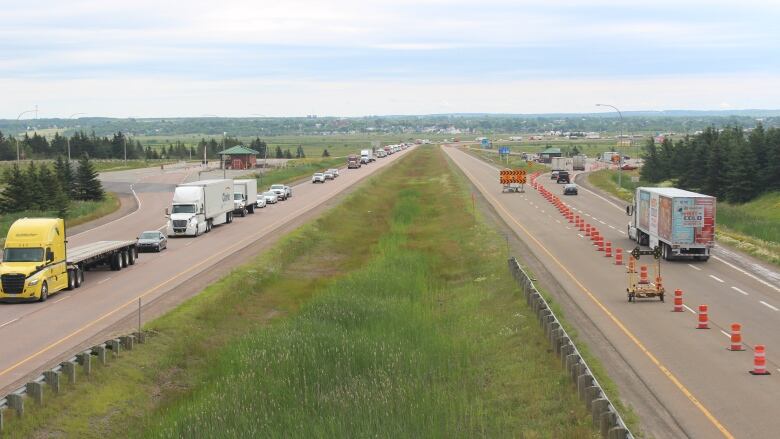Atlantic travel bubble hurting economy in border towns, mayors say
There are 3 active cases of COVID-19 in New Brunswick

New Brunswick has no new cases of COVID-19 as weektwo of the Atlantic travelbubble draws to a close not without stirring up some controversy over the lineups at the border.
Although the mayors of Sackville, N.B., and Amherst, N.S., were relieved to see the opening of the Atlantic bubble July3, the two border towns feel they're not benefiting from the increase in traffic.
"The spirit of the Atlantic bubble is to make the movement of individuals living within the four provinces New Brunswick, Nova Scotia, Newfoundland and Labrador and Prince Edward Island simple and easy so people living within the bubble can do business and socialize," said Amherst Mayor David Kogon.
"That simply isn't happening."
Kogonand SackvilleMayorJohn Highamsay travellers are experiencing up to two-hour wait times to cross the border, which is also impacting residents in the two towns.
And while the Atlantic bubble is supposed to be helping the economyin the area,it's doing quite the opposite.
"It is the inconsistency in crossing that is of most concern,"Higham said.
"Essential workers came through fine before the bubble, but now they do not know what awaits them on any day."
Kogon also noted that some employees who live in New Brunswick but work in Nova Scotia, have quit their jobs because of the lengthy commute.
Kogon wrote a letter to Premier Blaine Higgs asking for a meeting, where the two mayors could discuss why residents of the two border communities have to fill out paperwork every time they need to work or shop in the other province.
He's hoping they will be able to to come up with possible solutions.
"Our downtown is based on tertiary services," Higham said."With an open border, we expected many Amherst visitors to come back.But the feeling is that border uncertainty has kept most of them away so far."
3 active cases of COVID-19
There are three active cases of the respiratory disease in New Brunswick.The most recent case was announced Wednesday and involved a temporary foreign worker who is self-isolating in the Moncton region, also known as Zone 1.

There is a second active case in the Moncton region and another case in the Fredericton region, also known as Zone 3.
All three cases are travel-related but none are related to the Atlantic bubble, which opened July 3.
Public Health has confirmed 168 cases of COVID-19 in New Brunswick. Since the outbreak started in March, 163 people have recovered and two people have died. No one is in hospital.
To date, 47,742 tests have been performed for COVID-19.
What to do if you have a symptom
People concerned they might have COVID-19 symptoms cantake a self-assessment teston the government website at gnb.ca.
Public Health says symptoms shown by people with COVID-19 have included: a fever above 38 C, a new cough or worsening chronic cough, sore throat, runny nose, headache, new onset of fatigue, new onset of muscle pain, diarrhea, loss of sense of taste or smell, and difficulty breathing. In children, symptoms have also included purple markings on the fingers and toes.
People with one of those symptoms are asked to:
-
Stay at home.
-
Call Tele-Care 811 or their doctor.
-
Describe symptoms and travel history.
-
Follow instructions.












_(720p).jpg)


 OFFICIAL HD MUSIC VIDEO.jpg)
.jpg)



























































































